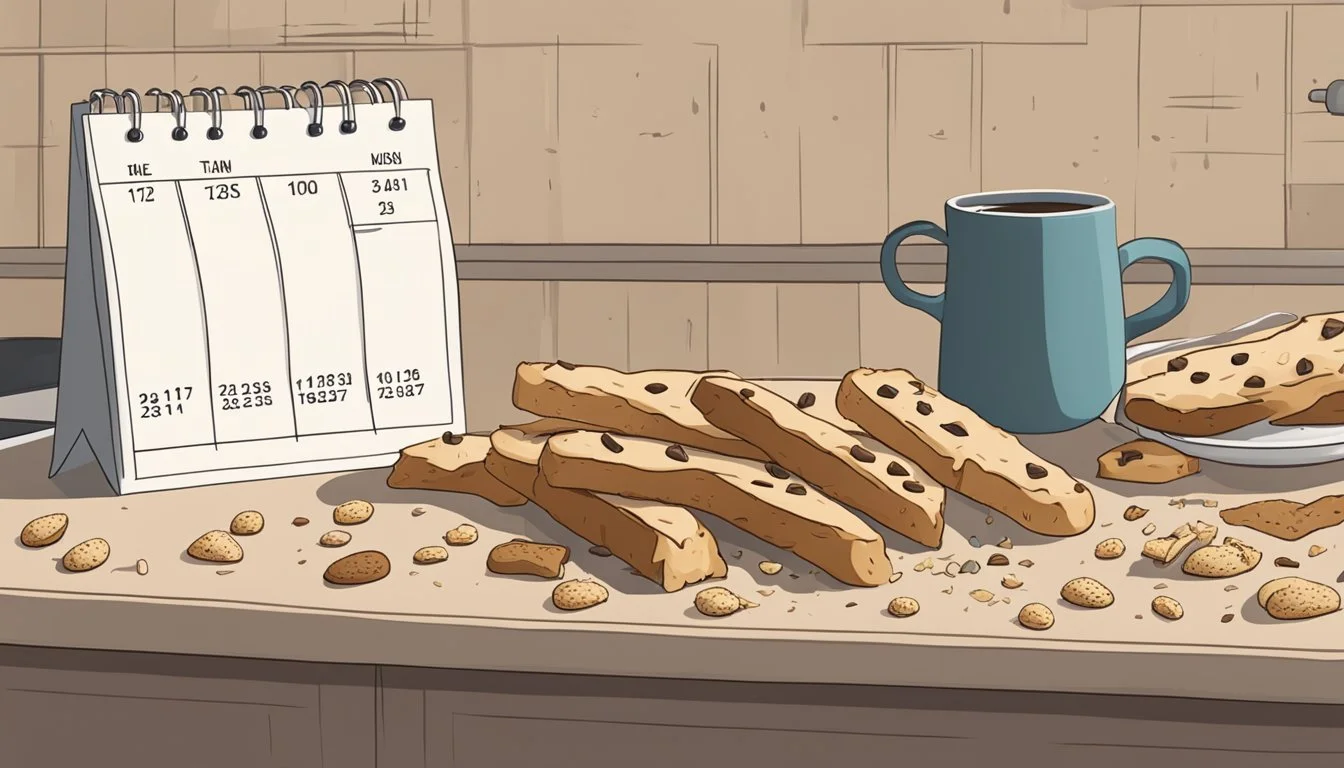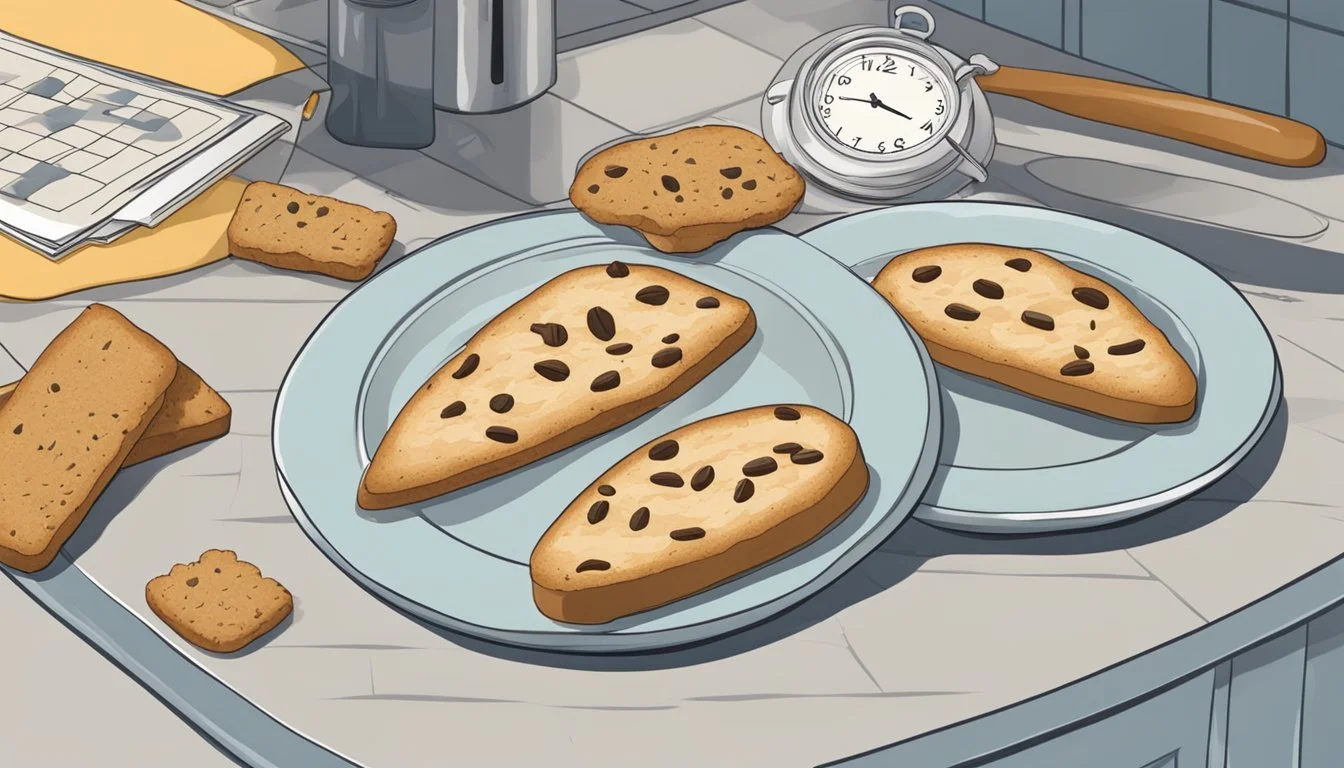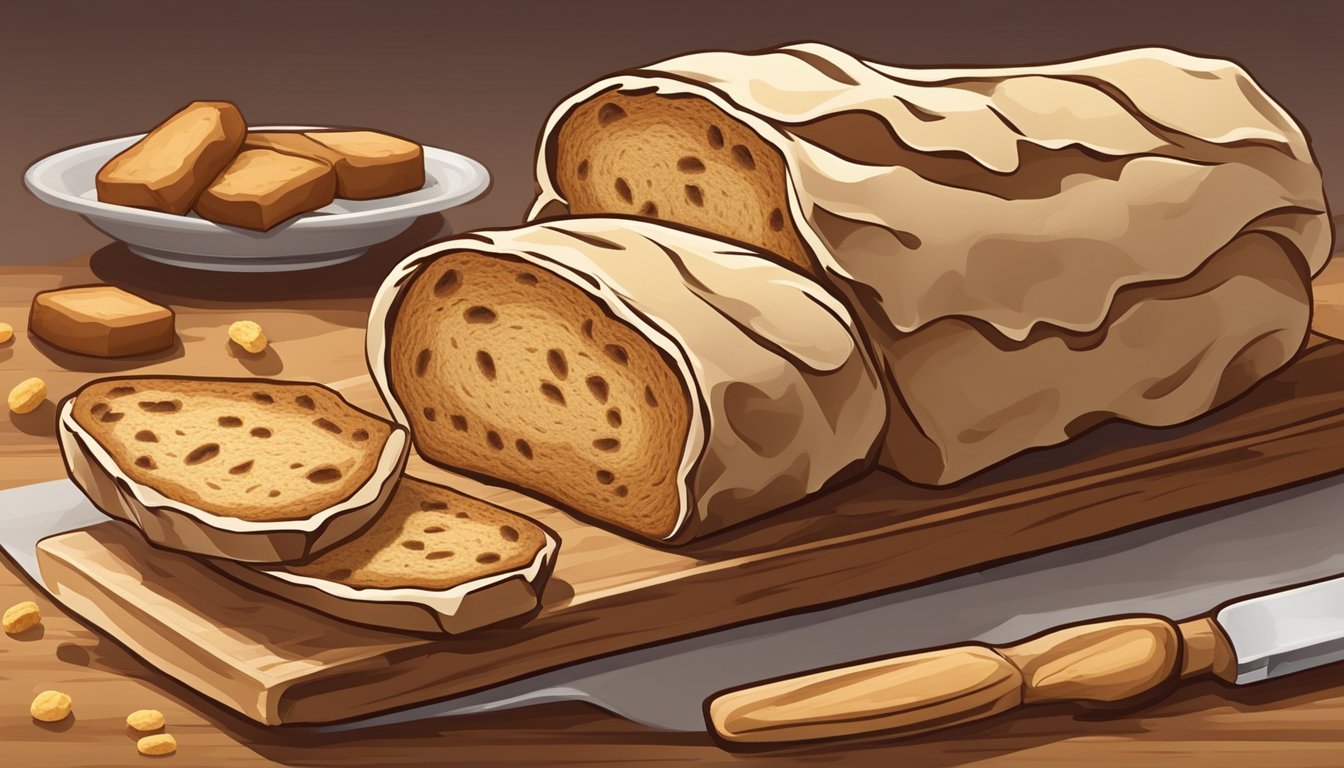How Long Do Biscotti Last?
Shelf Life and Storage Tips
Biscotti, the twice-baked Italian cookies known for their dry, crunchy texture, are a popular treat often enjoyed with coffee or tea. Thanks to their low moisture content achieved through the unique baking process, biscotti boast a longer shelf life than many other cookies. While the lack of moisture contributes to their durability, how these cookies are stored plays a crucial role in maintaining their quality and extending their shelf life.
In optimal conditions, biscotti can remain fresh for up to a month at room temperature when kept in an airtight container. This method helps to protect them from both moisture and air, which can lead to staleness. For those looking to preserve their biscotti for an extended period, freezing offer an excellent solution. Stored properly in the freezer, biscotti can maintain their best quality for about three months. It's important to note that the storage environment should be stable to prevent the biscotti from absorbing any odors or flavors, which can detract from their original taste.
Understanding Biscotti
The iconic Italian biscotti come in various types and contain key ingredients that define their crisp texture and delectable taste. This section explores the traditional origins of biscotti and the fundamental components that make up this beloved Italian treat.
Italian Origins and Types
Italian biscotti, originally known as cantucci, hail from the Tuscan city of Prato and have been a staple in Italian cuisine for centuries. These twice-baked cookies are known for their dry, crunchy texture, which comes from a unique baking process where the dough is first shaped into a loaf, then sliced and baked a second time. There are numerous types of biscotti, ranging from the classic almond-flavored cantucci typical of Tuscany, to variations that may include nuts (how long do nuts last?), dried fruit (how long does dried fruit last?), or chocolate chips (how long do chocolate chips last?).
Key Ingredients
The primary ingredients in traditional Italian biscotti include eggs, sugar, and flour. Depending on the recipe, one may also find butter or oil to add richness, baking powder for leavening, and almonds which are a classic addition. Authentic recipes typically forgo butter or oil, relying on eggs to bind the ingredients together. Whether studded with almonds, sprinkled with chocolate chips, or combined with nuts and dried fruit, the ingredients are mixed to form a stiff dough that is then baked to perfection.
Biscotti Baking Technique
Biscotti are distinctive for their crunchy texture, achieved through a two-stage baking process. Precision in each step ensures the ideal consistence and durability of these crisp cookies.
Preparing the Dough
The foundation of biscotti lies in its dough, consisting of a blend that typically includes flour, sugar, eggs, and baking powder. Ingredients should be accurately measured to ensure consistency. In a large bowl, one combines these dry ingredients before incorporating wet elements. The option to add flavorings like almonds or chocolate chips exists here, with gentle folding to distribute them evenly.
Ingredients:
Dry: flour, sugar, baking powder
Wet: eggs (and flavorings like almonds)
Steps:
Measure all ingredients accurately.
Mix dry ingredients in a bowl.
Add wet ingredients and fold in optional additions like nuts or dried fruit (how long does dried fruit last?).
Formation and Baking of Logs
Once the dough is prepared, bakers will shape it into long, flattened logs on a parchment-lined baking sheet. The dough often sticks, so wetting one's hands can help manage it. Biscotti logs should be spaced apart to allow room for expansion.
Formation:
Shape into even logs.
Use parchment paper to prevent sticking.
Baking:
Preheat oven (temperature varies, but 350°F is common).
First bake until the logs are firm, usually around 25-30 minutes.
Slicing and Achieving Crunchiness
After the initial bake and a brief cooling period, the next step is slicing the logs into individual biscotti. A serrated knife is ideal for clean cuts and to avoid crumbling. Each slice, often diagonal, facilitates the signature biscotti shape. Biscotti are then returned to the oven for a second time to achieve their renowned crunchiness. This stage is critical, as it dries out the slices, transforming them into crisp cookies.
Slicing:
Use a serrated knife for clean cuts.
Cut diagonally to create the traditional biscotti shape.
Second Bake:
Arrange slices cut-side down on the baking sheet.
Bake until they're dry and crunchy, which can take an additional 15-20 minutes depending on thickness.
Storage Solutions
Proper storage is critical for maintaining the quality and longevity of biscotti. They require protection from moisture and air to retain their signature crunch.
Airtight Containers
Storing biscotti in airtight containers is the best method for keeping them crunchy. Glass containers with secure lids are ideal because they do not retain odors and prevent air from softening the biscotti. For added protection, one might line the container with parchment paper to absorb any excess moisture.
Benefits:
Protects from moisture and air
Maintains crunchiness
Materials:
Glass container with tight-fitting lid
Parchment paper (optional)
Refrigeration and Freezing Options
Although refrigeration is not recommended due to potential condensation, freezing biscotti is a viable option. To freeze biscotti, individuals should wrap them tightly in plastic wrap followed by a layer of aluminum foil or place them in a plastic bag, squeezing out as much air as possible before sealing. This method can preserve biscotti for up to three months.
Refrigeration:
Not advisable for risk of softening due to moisture
Freezing Instructions:
Wrap biscotti in plastic wrap
Place wrapped biscotti in a plastic bag
Remove air from bag, then seal
Store in the freezer
Using these storage techniques, one can ensure their biscotti remain delicious and crunchy for an extended period.
Maximizing Shelf Life
To ensure biscotti retain their desired texture and flavor, proper storage techniques at room temperature and in the freezer are essential.
Proper Room Temperature Storage
Storing biscotti effectively at room temperature hinges on employing an airtight container to safeguard them from moisture and air. Biscotti maintain their quality for up to a month when stored in this manner. The key is to:
Use airtight containers: This preserves the biscotti's crunch by preventing air and moisture infiltration.
Keep in a cool, dry place: Room temperature, away from direct sunlight and heat, helps maintain freshness.
Freezing and Defrosting Techniques
Freezing extends the shelf life of both store-bought and homemade biscotti. When properly frozen, biscotti can last up to three months. Here are specific steps for freezing and defrosting:
How to freeze biscotti:
Allow biscotti to cool completely after baking.
Wrap the biscotti tightly in plastic wrap or aluminum foil.
Place wrapped biscotti into airtight freezer bags or containers.
Label with the date to keep track of freshness.
How to defrost biscotti:
Thaw biscotti at room temperature in the container to prevent condensation from making them soggy.
For best results, consume defrosted biscotti within a few days to enjoy their optimal texture and flavor.
Serving and Usage
In the realm of delicious Italian biscuits, serving Biscotti properly can enhance the tasting experience. They are not only delightful on their own but also pair splendidly with certain beverages and can be modified with chocolate enhancements for an indulgent twist.
Complementing Beverages
When one serves Biscotti, they often accompany it with beverages that complement their crisp texture and rich flavor. Espresso is a classic pairing—its robust intensity cuts through the sweetness while cleansing the palate, perfect for the traditional almond varieties. Here's a simple list of beverages to consider:
Espresso: The intensity makes it a perfect match.
Coffee: It pairs well with almost any Biscotti flavor.
Tea: Choose a black or herbed tea for a lighter contrast.
Dessert Wine: A sweet Vin Santo or Port enhances the Biscotti's flavors.
Chocolate-Dipped Biscotti Variations
The custom of dipping Biscotti in chocolate adds an opulent layer of taste and texture. When one opts for chocolate-dipped, it's often to add a contrast in flavors or for a more decadent treat. They should select a chocolate that complements the Biscotti's ingredients:
Biscotti Ingredient Recommended Chocolate Type Almond Dark Chocolate Orange/Citrus Milk Chocolate Plain White Chocolate
Whether they are fully coated or just half-dipped, chocolate-covered Biscotti turn a simple treat into a special occasion delight. It’s best to store chocolate-dipped Biscotti in a cool, dry place to maintain the quality of the chocolate and the crunch of the biscuit.
Troubleshooting Biscotti Issues
Biscotti enthusiasts often face challenges in maintaining the desired texture and freshness of their treats. This section addresses common issues such as staleness and moisture that can compromise the quality of biscotti.
Preventing Staleness and Crumbling
To preserve the structure and prevent biscotti from becoming stale or crumbling, one should store them properly. Biscotti last up to a month at room temperature when kept in an airtight container. Here are specific methods to ensure lasting freshness:
Airtight Containers: Store biscotti in containers with a tight seal to prevent air from making them stale.
Storage Location Expected Freshness Notes Room Temperature Up to 1 month Store in a dark, dry place. Freezer Up to 3 months Ideal for long-term preservation.
Paper Towel Lining: Line the container with a paper towel to absorb any excess moisture.
Dealing with Moisture and Mold
Moisture is an enemy of biscotti, as it can lead to a moldy end-product or a soft texture that betrays the biscotti's characteristic crunch.
Avoid Refrigeration: Do not store biscotti in the refrigerator, as it is conducive to moisture accumulation and can introduce unwanted odors.
Paper Towels for Absorption: Use paper towels inside storage containers to mitigate any potential moisture.
Check for Signs of Mold: Regularly check stored biscotti for any signs of mold and consume within the ideal time frames to avoid spoilage.
By adhering to these strategies, one can tackle the most frequent biscotti issues, ensuring that these Italian cookies retain their trademark crunch and flavor.






